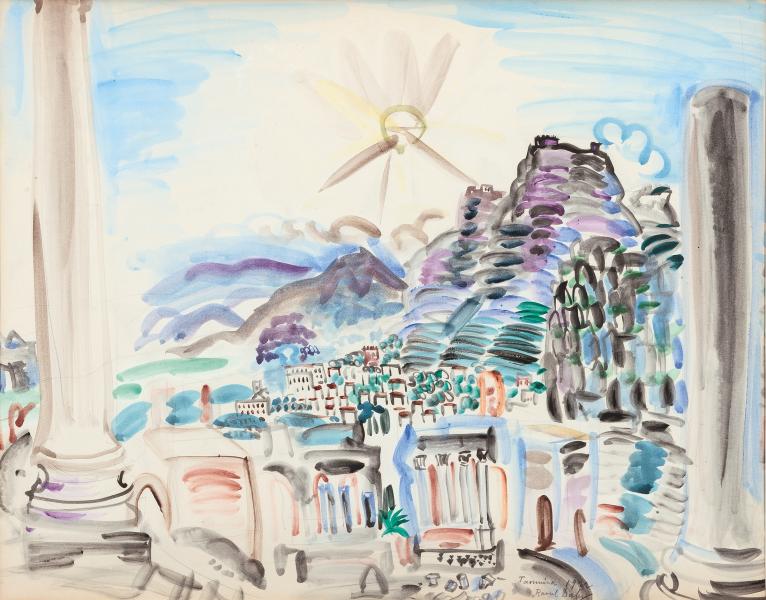Taormina, 1922
Watercolor on paper, signed, situated et dated 1922 lower right.
47 x 60 cm
Provenance:
Ader-Picard-Tajan sale, Paris, November 24, 1988, lot 19
Private collection, Monaco
TRIP TO ITALY
When Raoul Dufy discovered Sicily in 1922 with his friend, the critic Pierre Courthion, he was still overwhelmed by the dazzling southern light. Dufy, a native of Normandy who had spent time in the South of France after the First World War, was deeply impressed. Settling in Vence, he painted the village extensively, from every angle, gradually liberating his drawing and brightening his palette. Dufy had already been to the South: to Martigues in 1904, to l'Estaque with Braque in 1908, to Antibes in 1910 and to Hyères in 1913, but in Vence, he really let the Mediterranean light infuse his brushes, and his work changed profoundly as a result.
He found the same sunshine in Italy, where the presence of the ancient heritage brought the Mediterranean myth to life even more intensely. After visiting Florence and Rome, he spent some time in Sicily, which inspired a number of his works. The ancient theater of Taormina is a remarkably well-preserved site. Overlooking the sea, its location is as exceptional as its remains, and Dufy would linger there on numerous occasions during his stay.
Whether in oils or watercolors, light is the main ingredient in these travel souvenirs. In our watercolor, the painter has even schematically depicted the sun, in the manner of a child's drawing. It dominates the landscape and gives color to the scene. Between greens, purples, blues and ochres, Taormina is adorned with luminous gems, contrasted by the use of black. Framed by two ancient columns, the composition plunges towards the ruins and the town, leading in the distance to the hills overlooking the theater.

